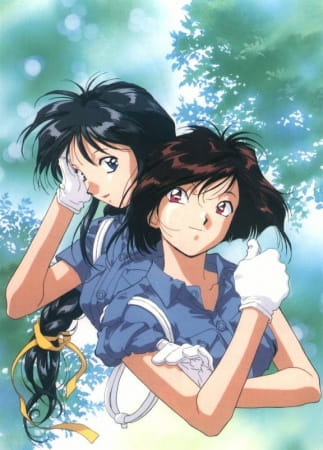

Most of the series reflects on the standing friendship between Miyuki and Natsumi as they deal with their personal lives and their jobs as police officers, with some being portrayed as slice of life stories. In reality, the Bokuto Hospital takes its place. However, the site where the Bokuto Police Station is supposed to be does not exist in the Sumida Ward. The majority of the series takes place in the Greater Tokyo Area. The series is largely episodic, and it focuses on the interaction between the main characters and the humorous supporting cast. The story revolves around Natsumi Tsujimoto and Miyuki Kobayakawa, two female officers of the Tokyo Metropolitan Police Department and the protagonists of the show as they are stationed at the fictional Bokuto Police Station located at Sumida, Tokyo. Since its release, You're Under Arrest has received positive reviews from critics. The series also spawned a live-action drama special starring Misaki Ito and Sachie Hara. The manga has been adapted into three television seasons, three OVA series and a film, all animated by Studio Deen. The chapters of You're Under Arrest have been collected in seven tankōbon volumes by Kodansha. It mixes both drama and action with some comedy and humor. It centers on a fictional police station in Sumida, Tokyo, as its officers tackle everyday criminals while keeping people safe. Personally, I think it should have been rated 'M', since there are various battle scenes involving gore.You're Under Arrest (Japanese: 逮捕しちゃうぞHepburn: Taiho Shichauzo) is a Japanese seinen manga series written and illustrated by Kōsuke Fujishima and was serialized in Kodansha's Afternoon magazine from 1986 through 1992. On a final note, Princess Mononoke was rated 'PG' by the censors in New Zealand. This is definitely animé for the non-animé viewer. Hopefully, Princess Mononoke will be the catalyst for the animé genre as a whole to reach a much wider audience. And the characters are three-dimensional to boot. It sends a message that nature is about understanding, rather than taming, it. The story line, although slightly complex, does not have the formulaic good-versus-evil scenario. The animation and voices are just half of what makes this film whole. The dubbing is on par with the original Japanese dialogue (although for a more authentic feel, you should check out the sub-titled version) courtesy of top writer Neil Gaiman, and the animation surpasses even Japanese standards. Princess Mononoke is a definite exception. Also, when animé does come to the West, it is often bastardised by the studios that bring them to the English-speaking market, through heavy re-editing, thereby disjointing the story line, and amateurish dubbing.

It is all too often the case that outside of Japan, the animation genre is typecast as being strictly for kids.


 0 kommentar(er)
0 kommentar(er)
